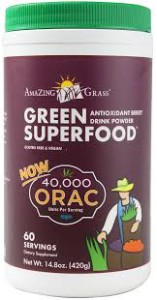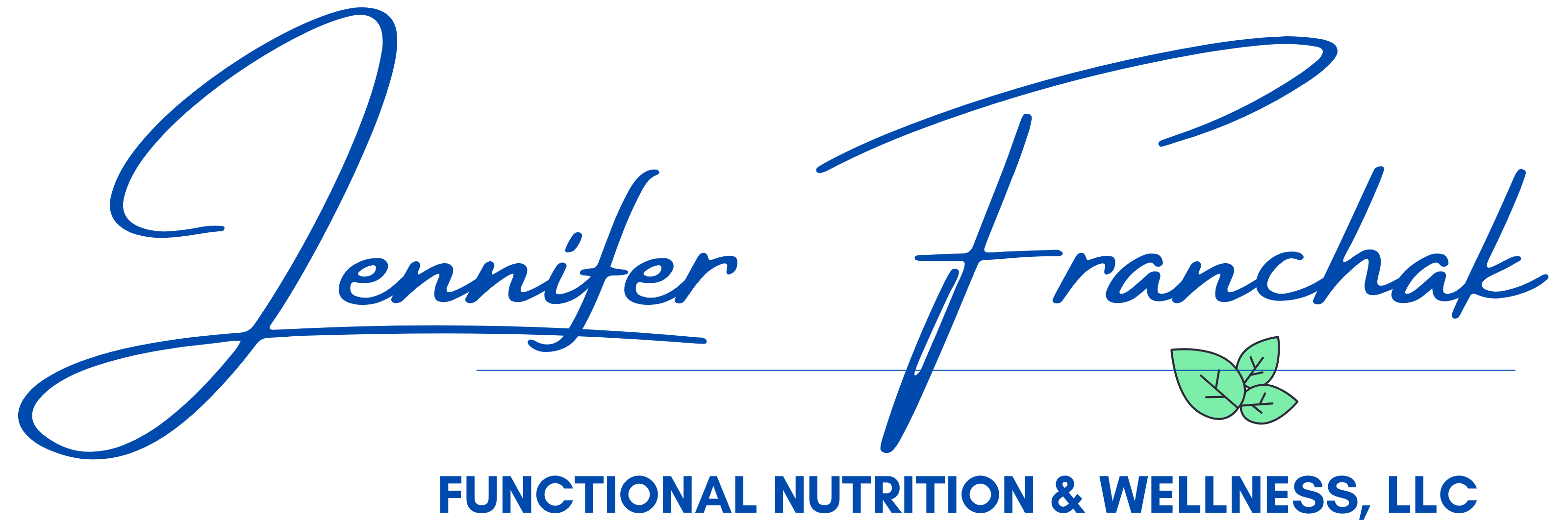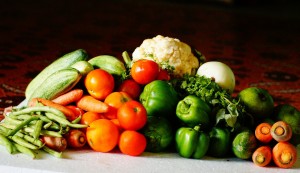We hear so much about antioxidants these days. But what are they? Is this just another health fad that’s promoted by TV doctors to boost supplement sales? Well, actually no. Antioxidants are amazing molecules that have the power to neutralize free radicals. Wait…what?!
OK. So free radicals are unstable molecules, which are missing an electron. Because they are missing an electron (a necessary component to the molecule) they go in search of a new electron. However, in the process of searching for a new electron, the free radicals cause damage to other cells and their DNA. This leads a mutation in the cell which can be a precursor to disease.
Our bodies actually produce a small amount of free radicals through normal cell function, but our amazing bodies also produce antioxidants to counteract them. So what is the big deal then?
Well, the problem with free radicals actually comes from the external factors that our bodies are exposed to on a daily basis which can lead to the creation of more free radicals within our bodies. Some of these external factors include:
- Toxins, such as pollution and pesticides on food and in water
- Eating a diet high in added sugars and processed foods
- Drinking too much alcohol
- Chronic stress
- Intense exercise (when the body is not used to it)
All of these toxins can become too much for our body’s natural defense system to handle, and we may start to experience health problems. In fact, there is a positive correlation between many diseases and the oxidative stress caused by too many free radicals. (1)
So where do antioxidants come in? Antioxidants neutralize free radicals by donating an electron to the free radical, therefore preventing further damage to other cells from the free radicals. Isn’t that cool?
According to an article published in the Journal BioMed Research International:
The entire world is witnessing an upsurge in chronic health complications like cardiovascular disease, hypertension, diabetes mellitus, different forms of cancer, and other maladies. Medical surveys suggest that diet may serve as a potential tool for the control of these chronic diseases…Diets rich in fruit and vegetables have been reported to exert a protective effect against a variety of diseases, particularly the cardiovascular disease and cancer. The primary nutrients thought to provide protection afforded by fruit and vegetables are the antioxidants. (2)
Of course there are various other factors that contribute to disease, but this is one factor that we can control by eating a nutrient rich diet, full of antioxidant-containing fruits and vegetables.
Antioxidants for Pregnant & Breastfeeding Moms
While eating foods rich in these compounds benefits almost everyone, it is especially vital for pregnant and breastfeeding moms.
This is because oxidative stress, due to various external factors, such as the ones I mentioned earlier, and insufficient antioxidant intake, can lead to or contribute to various neg ative pregnancy outcomes. Some of these include: Pre-eclampsia, diabetes, fetal growth restriction, and weakening the fetal immune system. (3)
ative pregnancy outcomes. Some of these include: Pre-eclampsia, diabetes, fetal growth restriction, and weakening the fetal immune system. (3)
In a book titled Nutrition and Lifestyle For Pregnancy and Breastfeeding, the authors state that “Several metabolic disturbances that can complicate pregnancy (in particular, placental disorders such as pre-eclampsia, but also gestational diabetes and hypertension) are characterized by enhanced oxidative stress.” (4)
The wonderful thing is that by incorporating plenty of antioxidant-rich foods and minerals into our diets, we can avoid some of the factors that contribute to these complications.
Additionally, by breastfeeding your baby, you will give him or her a definitive advantage. This is because breast milk is naturally full of the antioxidants which the baby needs to thrive and stay healthy.
Of course you can boost the antioxidant capacity of your breast milk by increasing your intake of foods containing these vital nutrients. (5) However, a diet high in processed food, and low in antioxidant-containing foods can create an imbalance between free-radical and antioxidant production. This type of imbalance could contribute to a weakened immune system for the baby.
An article in The Journal of Health, Population and Nutrition states:
If there are too many free radicals produced and too few antioxidants, a condition of oxidative stress develops, which may cause serious damage in infancy. A need to reduce oxidative stress and/or boost antioxidant defenses in these vulnerable infants is essential…Human milk has antioxidant properties. It contains vitamin C and E and enzymes, including superoxide dismutase, catalase, and glutathione peroxidase. These are known to protect against the potentially-harmful effects of oxidative stress. Apart from its role in maintaining the viability and texture of human tissue cells, it also modulates immune-mediated mechanisms in the body for a healthy survival. The role of antioxidants has also been depicted in the first window of infectivity, gingival and periodontal diseases, oral infections, and tissue morphogenesis. Hence, antioxidants form an important part of diet and, together with intracellular antioxidant enzyme systems, prevent various diseases. (6)
Boosting our Antioxidants
So what can we do boost our antioxidants?
There are four main antioxidants. These are:
- Vitamin E
- Beta-carotene
- Vitamin C
- Selenium
Vegetables and fruits have the highest concentrations of antioxidants.
Some of these include:
- Kale
- Broccoli
- Spinach
- Sprouts
- Greens
- Avocados
- Mushrooms
- Berries
- Prunes
- Nuts and seeds
Antioxidants are also found in well-sourced animal products, such as:
- Fish oils
- Egg yolks
- Liver
- Butter
- Milk
- Oysters
- Tuna
- Sardines
I recommend trying to eat vegetables at every meal. I will often eat about 2 cups of dark greens with my eggs at breakfast time. It may seem strange at first if you are not used to it, but it tastes great (taste buds do change!), it fills you up and provides you with a host of wonderful nutrients. Try to eat more vegetables than fruits, since they have high concentrations of antioxidants without the added sugar. Fruits are wonderful and should be included in the diet, but they are often consumed in lieu of vegetables.
Antioxidants are fragile and are most potent when consumed in raw and lightly steamed foods.
Also, you’ve probably heard about green tea being associated with antioxidants. Green tea contains epigallocatechin-3-gallate (EGCG) which is an antioxidant flavonoid, which boosts free-radical protection. I would suggest drinking organic green tea, as tea is a highly sprayed crop.
Supplementation can also be beneficial to boost your overall antioxidant intake. I like to recommend a whole foods supplement, which is safer and more readily absorbed by the body. Amazing Grass has an antioxidant powder derived from various foods, that you can add to water or a smoothie. I personally take this in addition to incorporating as many antioxidant rich foods into my diet as possible.
Grass has an antioxidant powder derived from various foods, that you can add to water or a smoothie. I personally take this in addition to incorporating as many antioxidant rich foods into my diet as possible.
I hope this gives you a little insight into the many benefits if antioxidants. In all of my nutrition coaching programs, I work with clients to boost their antioxidant consumption. I provide them with an “Antioxidant Assessment” in order to test their antioxidant capacity and then provide recommendations to improve their antioxidant levels.
If you are interested in changing your health and your family’s health by making simple nutritional and lifestyle changes, set up a FREE 30 minute strategy session with me today.
References
1-2 Anu Rahal, Amit Kumar, Vivek Singh, et al., “Oxidative Stress, Prooxidants, and Antioxidants: The Interplay,”BioMed Research International, vol. 2014, Article ID 761264, 19 pages, 2014. doi:10.1155/2014/761264
3-4 Gluckman, P., Hanson, M., Yap- Seng, C., & Bardsley, A. (2014). Nutrition and Lifestyle For Pregnancy and Breastfeeding (pp. 128-129). OUP Oxford.
5 Preedy, V. (2013). Handbook of Dietary and Nutritional Aspects of Human Breast Milk (p. 609) (S. Zibadi & R. Watson, Eds.).
6 Xavier, A. M., Rai, K., & Hegde, A. M. (2011). Total Antioxidant Concentrations of Breastmilk—An Eye-opener to the Negligent. Journal of Health, Population, and Nutrition, 29(6), 605–611.




Leave a Reply